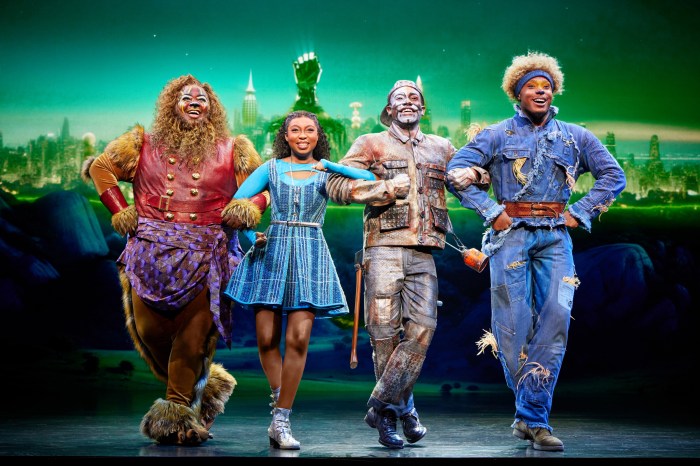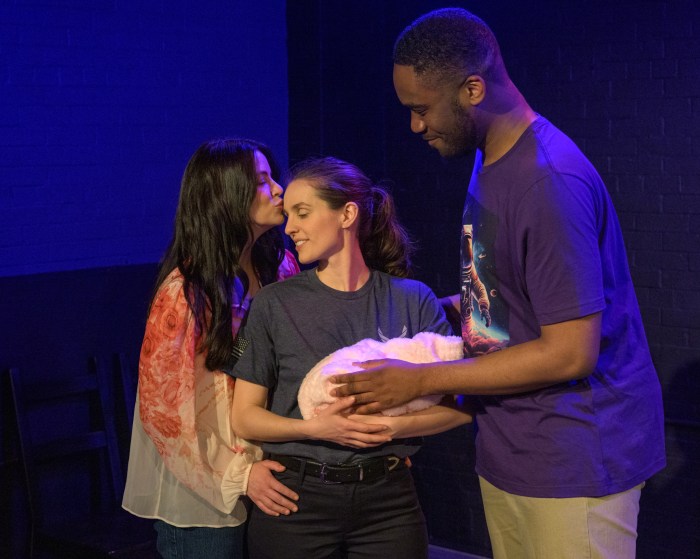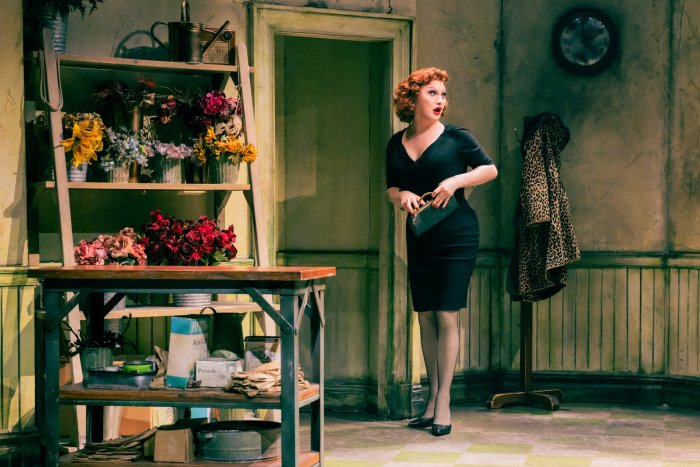City Opera, Met rebound from their shaky recent pasts
The economic tribulations of 2008 and beyond devastated not only Wall Street but the uptown bastions of opera in Manhattan as well.. Last season, the New York City Opera shut itself down while its home theater underwent renovations, and chaos reigned in the boardroom with the sudden departure of Gerard Mortier and abrupt hiring of George Steel. The Metropolitan Opera season started out badly this fall, with a disastrously received new production of “Tosca” provoking questions about Peter Gelb’s leadership.
Just a few months ago, City Opera seemed on the brink of extinction, but its brief November season (planned quickly less than six months ago) presented thought-provoking and worthwhile operatic presentations boding well for George Steel’s regime. It started with an “American Voices” gala concert graced by celebrities like Paula Zahn, Christine Ebersole, and Carolina Herrera. This concert showcased City Opera veterans (Joyce Castle and Sam Ramey, with Julius Rudel in the pit) in signature works from the past, while also giving big hints about what might be in the company’s near future (Golijov’s “Ainadamar,” Bolcom’s “A Wedding,” and Rufus Wainwright’s “Prima Donna”).
Recent mainstays like Lauren Flanigan, Anna Christy, and Amy Burton made welcome reappearances while glamorous outsiders added vocal and personal charisma —a radiant Joyce di Donato, an uneasy Wainwright, Broadway daddy Marc Kudisch, and the irrepressible Measha Brueggergosman. A festive mood was in the air with the newly rechristened David H. Koch Theater looking and sounding better than ever.
Hugo Weisgall’s atonal “Esther” had a brief but successful NYCO premiere in 1993 with a measly two performances. Many felt that it wasn’t given a chance to make its mark with audiences. Weisgall’s music isn’t melodic yet has sufficient variety, dramatic emphasis, and musical color to vividly dramatize the biblical story of the Jewish queen of Persia’s intercession on behalf of the threatened Jewish population. The style is retro avant-garde, watered-down 1950s style Schoenberg, but Weisgall and his librettist Charles Kondek are professional men of the theater. The piece works up to effective dramatic and musical tableaux, and the declamatory vocal line is always comprehensible and meaningful. Christopher Mattaliano and Jerome Sirlin recreated their original production, fluidly utilizing projected scenery both economical and aesthetically attractive. Lauren Flanigan, the original star, returned as well, with some wavering high notes but undimmed commitment, and backed by a strong supporting cast.
Christopher Alden envisioned Mozart’s “Don Giovanni” as an existential purgatory, condemning the libertine to a personal hell reliving his sins like an endlessly repeating nightmare — shades of Sartre’s “No Exit” and “Groundhog Day.” The unit set consisted of one large room with gray walls, dozens of chairs, and a huge lighted cross resembling both a Protestant church and a waiting room. The entire cast remained onstage throughout as witnesses and participants. The costumes suggested the 1930s, with a splash of traditional Spanish garb when the cast wasn’t dropping trou or petticoats. Alden’s less than “giocoso” vision of Mozart’s “dramma” presented sex and angst with a comely cast of buff baritones (Daniel Okulitch as a dapper don suggested Christian Bale in “American Psycho”) and a trio of somewhat vocally wild but wildly promising sopranos (former mezzo Keri Alkema shone as the sexually-awakened pious spinster Donna Elvira, with a wide-ranging, thrusting dark soprano hinting at Verdi in her future).
In the past, Alden’s direction often convoluted the libretto at the expense of the music and singers — but not here. The direction didn’t get in the way but inspired the singers to creative and incisive risk-taking performances, while Gary Thor Wedow’s conducting favored sensitive and stylish vocalism with welcome embellishments in the repeats. An idiosyncratic vision perhaps, but one that clearly speaks to the piece and the audience.
Don Juan makes a cameo appearance across the plaza at the Metropolitan Opera in a pantomime performed by Siberian work camp inmates in Janacek’s “From the House of the Dead.” Like “Esther,” this piece, derived from a Dostoyevsky novella, is looked upon as a bleak and forbidding work. Sung in Czech with nearly an all-male cast, virtually no plot, no love interest, and a spare, punchy late score, “House of the Dead” is a hard sell. Yet the 95 minutes I spent with the piece was one of the most exhilarating fusions of singing, acting, orchestral playing, direction, and design I have ever experienced. The English titles projected on the walls of the set ensured that audience members could comprehend the singing and kept their eyes glued to the stage, where a panorama of humanity unfolded.
Director Patrice Chereau and conductor Esa-Pekka Salonen created a complete world onstage. The kinetic direction of a 75-member cast stressed the vitality and humanity of the prisoners as a response to their brutal surroundings, while the conducting used the percussive ostinatos (reminiscent of free-form jazz improvisation at times) to underline a sense of pulsating humanity ready to break out at any moment. Eric Stoklossa, Kurt Streit, Stefan Margita, and Peter Mattei stood out in a strong ensemble.
A triumph for the Met and Peter Gelb.
Opera is alive and well in New York City, bringing change we can believe in.


































